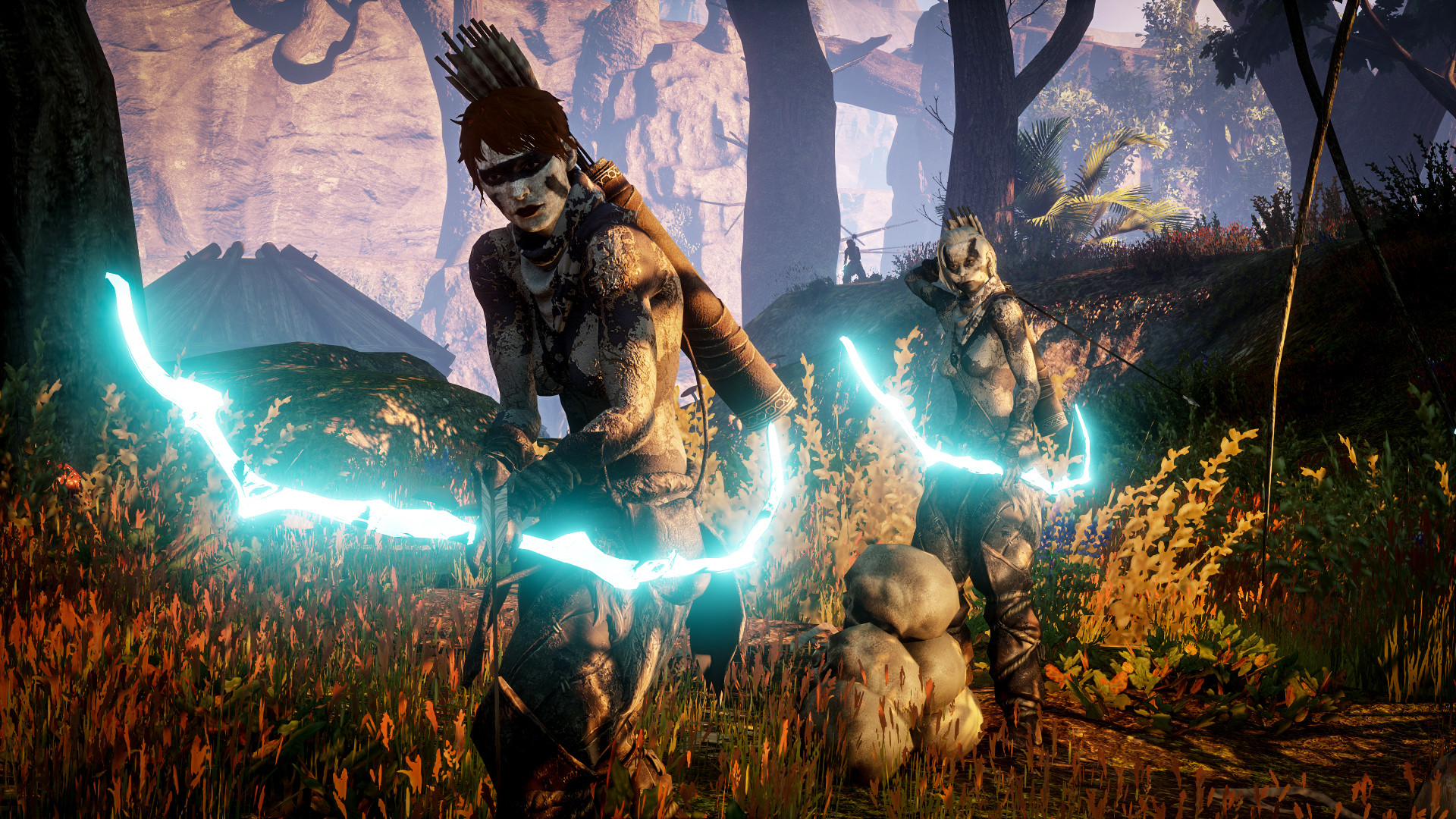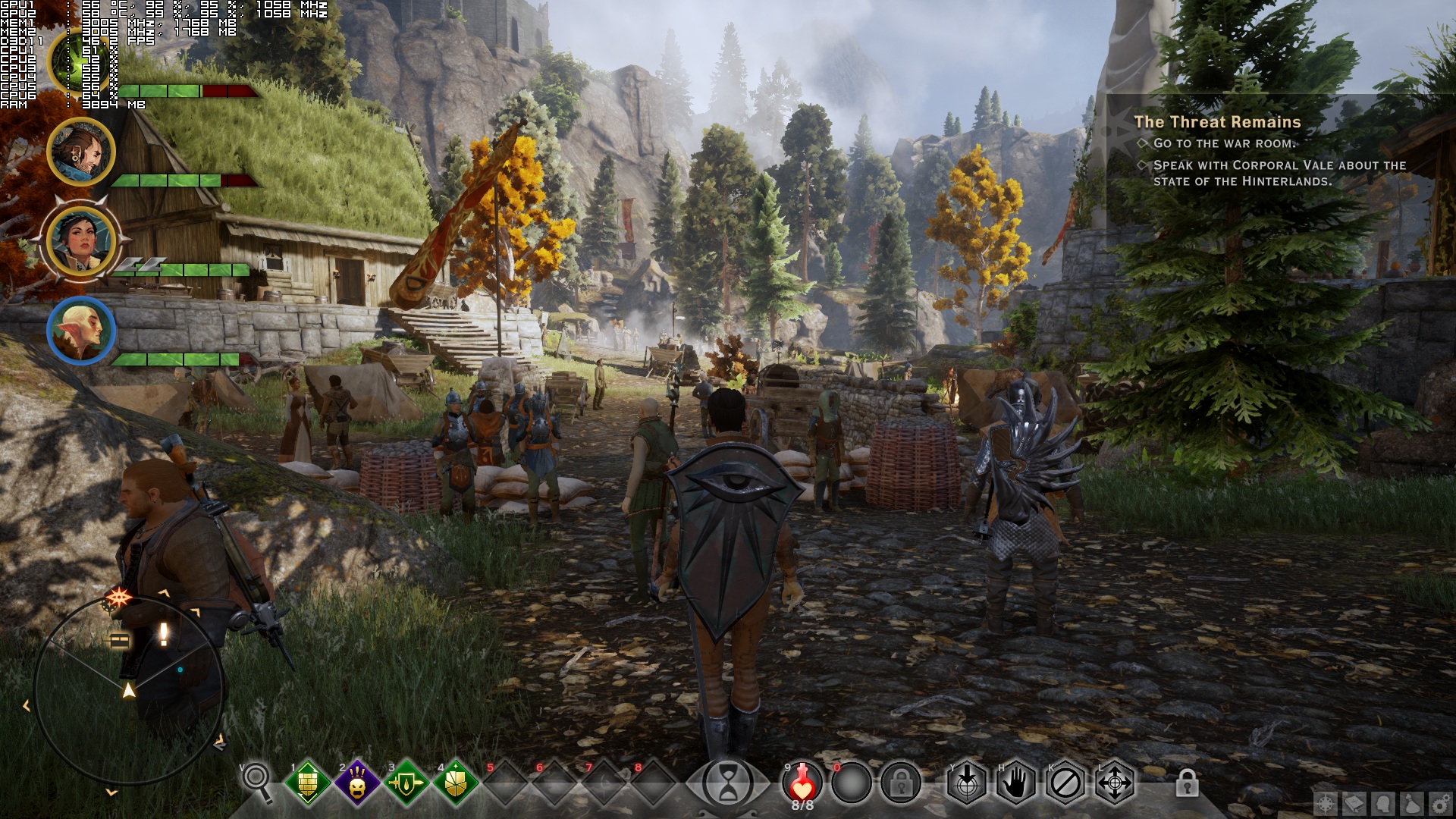

- Dragon age inquisition for pc 1080p#
- Dragon age inquisition for pc windows 8.1#
- Dragon age inquisition for pc Pc#
- Dragon age inquisition for pc Offline#
The only way we could ‘fix’ this issue was by running the game in offline mode. The game was basically closing itself randomly, and as such there wasn’t any error message to display when those crashes occurred. For unknown reasons, we were getting random crashes to desktop.
Dragon age inquisition for pc Pc#
And since we’ve already shown that the game looks good (not great, but at least good) on Low settings, we are pretty sure that PC gamers will be able to find the sweet spot between performance and visuals.īefore examining the game’s visuals, we feel the need to mention some annoying crashes we experienced with Bioware’s RPG. Thankfully, Bioware has provided a wide range of options to adjust.

In order to reach 60fps, we had to either lower our resolution to 720p, or lower some of our settings to High.
Dragon age inquisition for pc 1080p#
In that particular scene, our GTX690 was unable to push 60fps at 1080p with Ultra settings, and was dropping to mid-40s. Our i7 4930K ran the game with 81fps on both scenarios, meaning that there is still room for improvements regarding Frostbite 3’s multicore CPU scaling.ĭragon Age: Inquisition also requires a high-end GPU to shine. The only CPU that didn’t show any performance increase when HT was enabled, was our hexacore. With HT enabled, our simulated tri-core system ran the game with 69fps, while our simulated quad-core system pushed 73fps with HT enabled. Still, the game was more than playable on that system. With HT enabled, our dual-core system was able to run the game with 45fps (similarly to our tri-core system without HT) though there were minor stutters here and there). What’s also interesting is that Dragon Age: Inquisition sees huge improvements when Hyper Threading is enabled (on older and mid-range systems). This right there shows the benefits of multiple CPU cores, and why we consider Frostbite 3 one of the best engines available. On the other hand, our simulated quad-core system ran that scene with 60fps, while our hexacore was able to break through the 60fps barrier and offer a 81fps experience. For our CPU test, and in order to avoid any possible GPU limitation, we lowered our resolution to 1024×768 and lowered resolution scaling to its minimum (but kept the game’s Ultra settings).ĭragon Age: Inquisition ran with 16fps on our simulated dual-core system (with major stuttering issues), while our simulated tri-core system was able to push 45fps. Moreover, we’ve tested these systems at the following scene a scene that stressed both our CPU and our GPU. In order to find out whether the game scales well on a variety of CPUs, we simulated a dual-core, a tri-core and a quad-core system. Thankfully, Dragon Age: Inquisition follows this trend and scales incredibly well on multiple CPU cores.

This obviously means that PC gamers won’t have to mess around with third-party tools in order to find the best SLI compatibility bits for this title.Īs we’ve already said, Dragon Age: Inquisition is powered by DICE’s Frostbite 3 engine an engine that amazed us with its CPU scaling in Battlefield 4 and Battlefield: Hardline. NVIDIA has already included an SLI profile that offers amazing SLI scaling.
Dragon age inquisition for pc windows 8.1#
So, time now to see whether Bioware dropped the ball on this one, or whether we have in our hands a proper PC version of a highly addictive RPG.ĭragon Age: Inquisition is powered by DICE’s Frostbite 3 engine and as always, we used an Intel i7 4930K with 8GB RAM, NVIDIA’s GTX690, Windows 8.1 64-bit and the latest version of the GeForce drivers. Originally meant to go toe to toe with The Witcher 3: Wild Hunt, Bioware’s RPG was lucky enough to earn everyone’s attention after CD Projekt RED delaying its own RPG to 2015. Dragon Age: Inquisition was perhaps the most highly anticipated RPG of 2014.


 0 kommentar(er)
0 kommentar(er)
